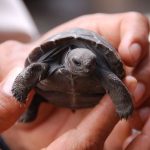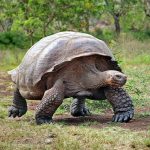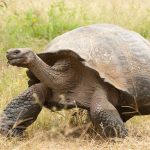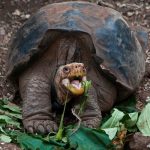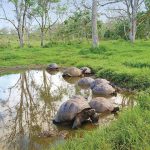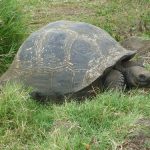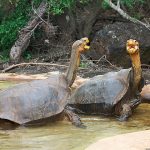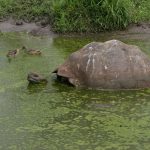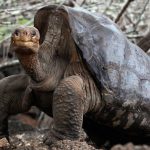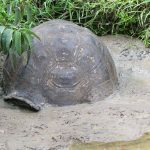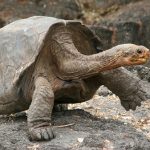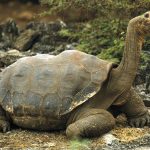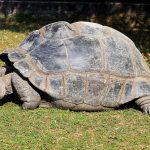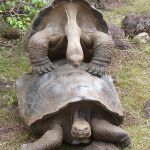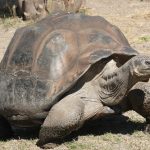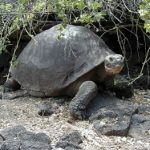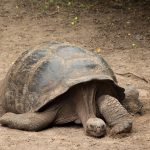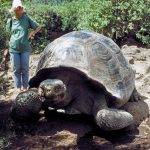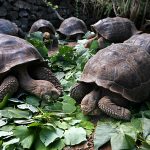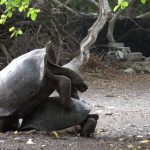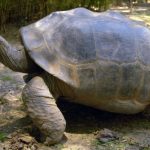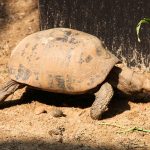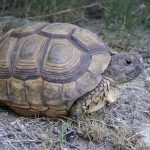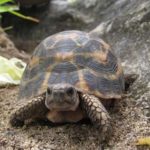Galapagos Tortoise
Galapagos tortoises are world’s largest living tortoises found in the Galapagos Islands off the Ecuadorian coast. They are the longest living vertebrates. They are known to be quiet, peaceful and lazy creatures. The reptile is herbivore.
| Kingdom | Animalia |
| Phylum | Chordata |
| Class | Reptilia |
| Order | Testudines |
| Suborder | Cryptodira |
| Family | Testudinidae |
| Genus | Chelonoidis |
| Scientific Name | Chelonoidis nigra |
| Other Names | Galápagos Giant Tortoise |
| Size | Up to around 1.8 m |
| Weight | Male: 272 – 317 kg Female: 136 – 181 kg |
| Color | Dull brown carapace |
| Distribution | Galápagos Islands |
| Habitat | Small, dry lowland islands |
| Diet | Cacti, grasses, leaves, berries, lichens, oranges, melons, milkweed |
| Hibernation Fact | Hibernates during winter |
| Predators | Hawks feed on eggs and newborn; cats, dogs, pigs and rats feed on eggs |
| Breeding Season | Anytime of the year but peaks during the rainy season between February and June |
| Mode of Reproduction | Oviparous (egg laying) |
| Clutch Size | 8 to 17 |
| Incubation Period | 3 to 8 months |
| Reproductive Age | 20 to 25 years of age |
| Average Lifespan | More than 100 years in the wild |
| IUCN Conservation Status | Vulnerable |
Galapagos Tortoise Pictures Gallery
- Baby Galapagos Tortoise.
- Galapago Tortoise
- Galapagos Giant Tortoise
- Galapagos Tortoise Eating
- Galapagos Tortoise Eggs
- Galapagos Tortoise Habitat
- Galapagos Tortoise Images
- Galapagos Tortoise Neck
- Galapagos Tortoise Photos
- Galapagos Tortoise Pictures
- Galapagos Tortoise Shell
- Galapagos Tortoise
- Galapagos Tortoises
- Geochelone Nigra
- Images of Galapagos Tortoise
- Largest Galapagos Tortoise
- Oldest Galapagos Tortoise
- The Galapagos Tortoise
- Tortoise Galapagos
- Tortoises Talapagos
- Galapagos Tortoise Size
- Pictures of Galapagos Tortoise
- Galapagos Tortoise Diet
- Galapagos Tortoise Mating


